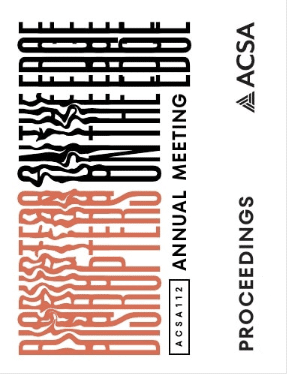Author(s): Liyang Ding
Jean Gebser, a prominent German-Swiss philosopher, introduces a transformative framework that aims to elucidate human consciousness and cultural structure, laying the foundation for a new approach to interpreting the development of architecture. This paper delves into the intersection of Gebser’s theory and modern architecture, with a particular focus on the emergence and advancement of the “aperspectival” spatial concept in the work of German architect HansScharoun as an illustrative example. Challenging the prevailing linear understanding of time and space, Gebser’s The Ever-present Origin offers insights into the forms and mutations of human consciousness from its primordial beginning to the “present,” positing that humanity evolves through different modes of consciousness, with each mode building upon and transcending the previous one. Gebser believes that because a key aspect of understanding human perception of time and space is the notion of perspective, the discovery and application of perspective indicate people’s consequent awareness of space. Therefore, based on the absence or presence of perspective, Gebser recognizes three “epochs” in human history, “unperspectival,” “perspectival,” and “aperspectival,” which correspond to the era from the inception of human civilization to the Renaissance, from the Renaissance to the early 20th century, and from the twentieth century onward, respectively. Gebser’s philosophy thus provides a new framework for us to understand architecture. Borrowing Gebser’s analysis of the “aperspectival” consciousness, this paper shows that the development of modern architecture during the early decades of the twentieth century embraced a new spatial language that was aimed to reconcile the fragmentation of modern life and form a harmonious wholeness, resonating with the evolving human awareness of “integrity.” The work of notable architects, such as Frank Lloyd Wright, Walter Gropius, and particularly Hans Scharoun, emphasized the interpenetration of spaces, the blurring of inside-outside boundaries, and the liberation from the linear perspectival spatial construction. The paper thus explores the profound affinity between Gebser’s concept and Scharoun’s architecture, demonstrating that in his theater and concert hall projects, Scharoun challenged both the linear perspective tradition and linear progression of time. Through a close reading of Scharoun’s spatial creation, this paper argues that the architect experimented with new spatial concepts such as “simultaneity” and “aperspectivity” and designed structures that not only accommodated the changing needs of individuals, programs, and society but also promoted a holistic and integral consciousness.
https://doi.org/10.35483/ACSA.AM.112.45
Volume Editors
Germane Barnes & Blair Satterfield
ISBN
978-1-944214-45-6

 Study Architecture
Study Architecture  ProPEL
ProPEL 
